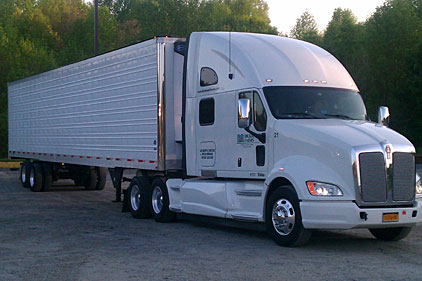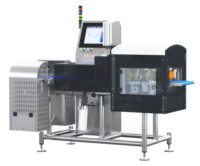Packaging Solutions: All the Angles

Editor’s note: With more sustainable packages appearing on store shelves, Refrigerated & Frozen Foods seeks an industry perspective from Brian McGlynn, a 30-year-plus food packaging industry veteran who has worked with all types of packaging materials.
Refrigerated & Frozen Foods: How do sustainability concerns impact food package decisions?
Brian McGlynn: A lot has been written about sustainability, so I will leave it to the experts to interpret the immediate effects of “sustainability” on consumer behavior. My group [McGlynn & Associates] is focused on food packaging and therefore, constantly is re-engineering tray weights, designs, material options and other added-value treatments that improve products, provide point-of-sale differentiation and less packaging waste.
The recent global economic downturn may cause a marginal shift in U.S. retail markets as they pursue sustainability goals as well as improved cost and convenience. Consumers however, will recognize the need to balance their purchasing choice with environmental concerns. The paradigm trade off is, “Sustainability – but at what price?”
R&FF: Would you agree that sustainable practices benefit both a food processor’s image and bottom line?
McGlynn: I think of it in three ways. First, over packaging is over packaging. Less material typically means less energy to produce, transport and dispose. Environmental and supply sourcing are critical in this global economy. Secondly, a critical packaging cost element involves efficient pallet pack-out to maximize units per case and cases per pallet, which generates fuel efficiency and lower cost. Thirdly, every inch in a freezer has a cost to sales return. Regardless of whether you’re talking about frozen meals or a downsized concentrated detergent product, you’re always trying to engineer packaging for optimal retail display utilization. Consumers are grasping the message that waste has a cost and there are buying choices to be made.
Procter & Gamble stresses that its “moment of truth” is when the product is sold. Therefore, P&G’s objective is to create products that make consumers’ lives easier and are desirable to retailers. This says it all and shows why they are a leader in their brand categories. Smart business practices!
R&FF: Let’s talk about making products “more desirable” for retailers. What’s your opinion of Wal-Mart’s leadership in sustainability?
McGlynn: It’s no secret that Wal-Mart - with its nine sustainable packaging metrics - is a primary mover and is leading this global transformation. They are targeting a 5 percent reduction in packaging by 2013, utilizing a comprehensive scorecard to measure the performance of each consumer packaged goods supplier.
Sam’s Club Director of Packaging, Amy Zettlemeyer-Laraz, addressed PACK EXPO attendees last fall and strongly encouraged vendors to present innovative solutions to improve their landed product’s packaging score. The weighted scorecard - with massive, detailed requirements - will help any supplier’s management become more sustainable.
Complete, transparent sustainability should produce less packaging waste, lower costs and a better environment. Often, however, this may result in capital investment for the processors who are burdened with those difficult financial ROI decisions. For example, several U.S. and European frozen food processors have introduced a 40 percent post-consumer recycled content C-PET tray following extensive sustainability analysis and capital investment.
R&FF: What’s your opinion of growth in the U.S. frozen entrée market?
McGlynn: Convenience frozen meal sales are projected to climb to $6.5 billion in 2011. Some of this growth will come at the expense of falling restaurant sales. Meanwhile - with economic factors still squeezing the food budget - there’s less growth projected for fresh refrigerated ready meals while the less expensive frozen category has experienced recent expansion in worldwide markets.
Steaming technology also has improved the quality and reduced the cooking time of a greater number of frozen home meal solutions. A small portion of shelf-stable meals could shift to frozen foods as quality and cost concerns impact consumers’ buying decisions. Shelf-stable trays require complex co-extruded materials that might be at odds with sustainable programs but offer preparation convenience.
The stand-up, multi-serve pouch concept is producing double-digit sales growth in many food categories including the frozen segment. We’ve seen a new line of microwaveable restaurant-quality meals utilizing renewable paper containers that has gained significant market share in less than one year. It offers reduced cooking time, consumer convenience and meal value.
R&FF: You mentioned several packaging examples. How do processors evaluate the best format?
McGlynn: It all comes down to convenience and value. When it comes to sustainability, you’re factoring in the cost to include recycled and/or other benign or non-petroleum alternatives.
Renewable supply material sources, such as paper, also are critical. I think this is particularly true for organic and fresh foods because demographics suggest that their consumers feel responsible about recycling and product life cycle issues. I’ll note that recycling is not a pure science. It is more extensively practiced in our high density and coastal communities - than in rural areas.
If you’re talking about sustainability across a broad business platform, there’s a case for both renewable materials and another for recyclability. Technical advances - using biodegradable materials or bio-resins - have been negligible, to date. C-PET plastic trays are an excellent carrier and present a strong recycling and sustainability position as the dominant container in frozen meals.
R&FF: Do you see industry suppliers and processors taking the issue seriously?
McGlynn: We do not see a huge “Good Housekeeping Seal” stamped on cartons. However, behind each product are thousands of hours of research and analysis directed at eliminating inefficient “over packaging” in favor of more environmentally friendly options. Both package suppliers and food processors are joining developmental efforts to positively affect their material supply chain from the harvesting of components to the final delivery. No decision can be made independently without consideration of overall sustainability. It has been said that a cynic knows the price of everything and the value of nothing.
A 30-year-plus packaging industry veteran, Brian McGlynn is president of McGlynn & Associates, a package consulting and sales firm in Midlothian, Va. Readers may contact him at (804) 744-5484 or at mcglynn@bpmtrays.com.
Looking for a reprint of this article?
From high-res PDFs to custom plaques, order your copy today!







